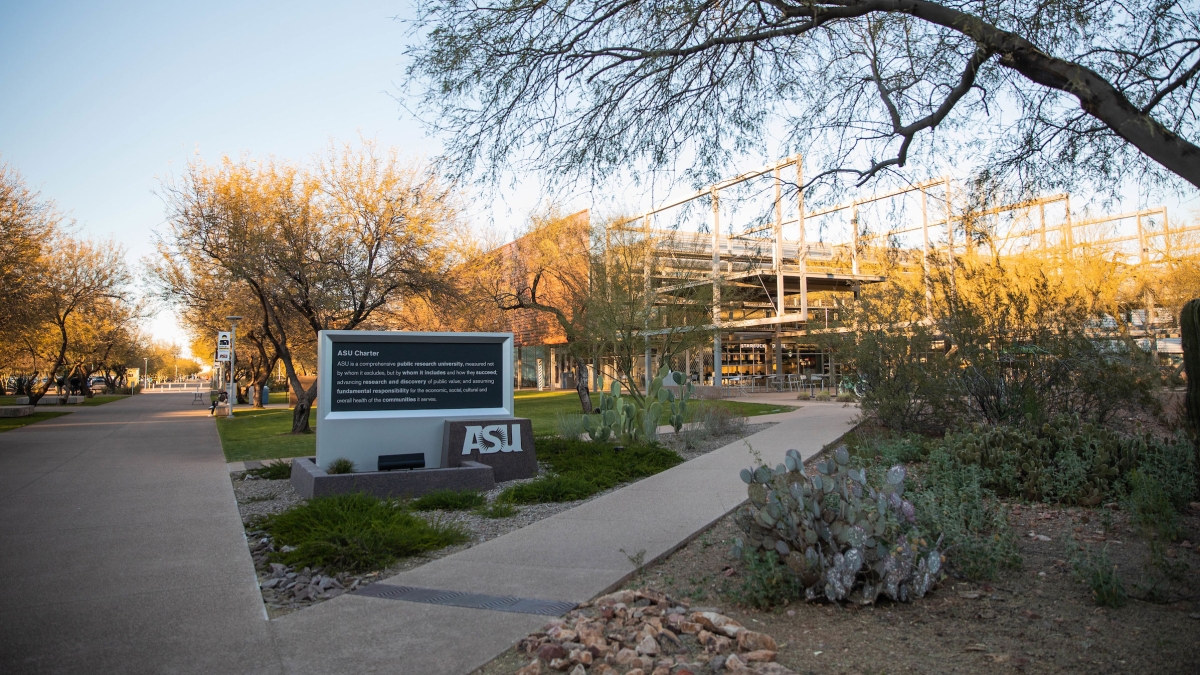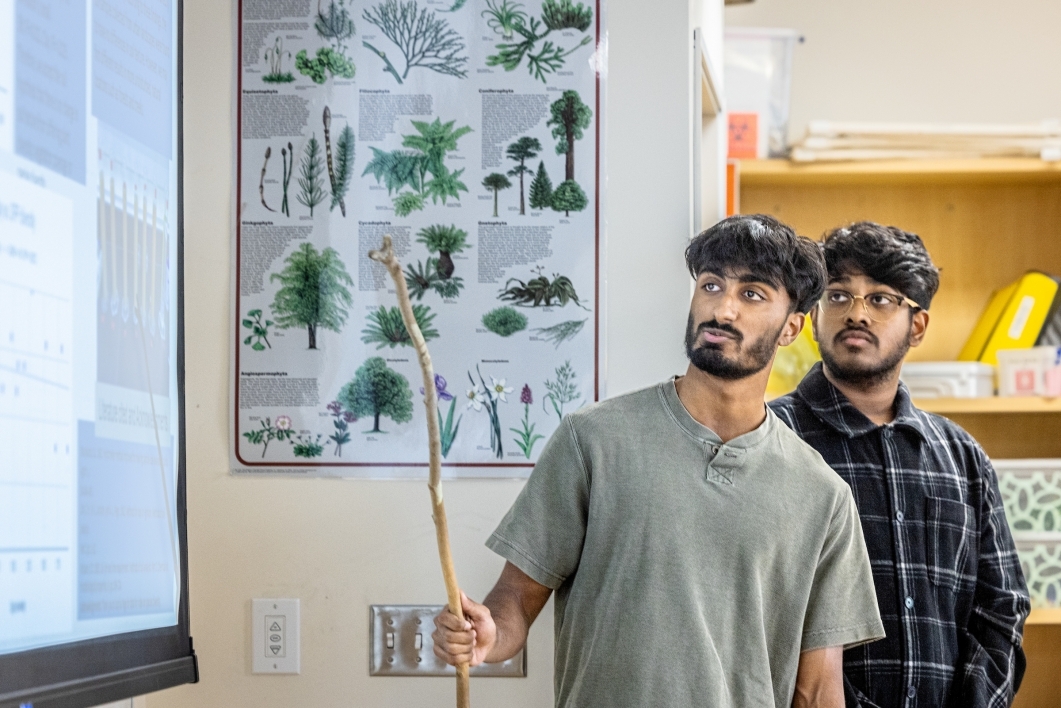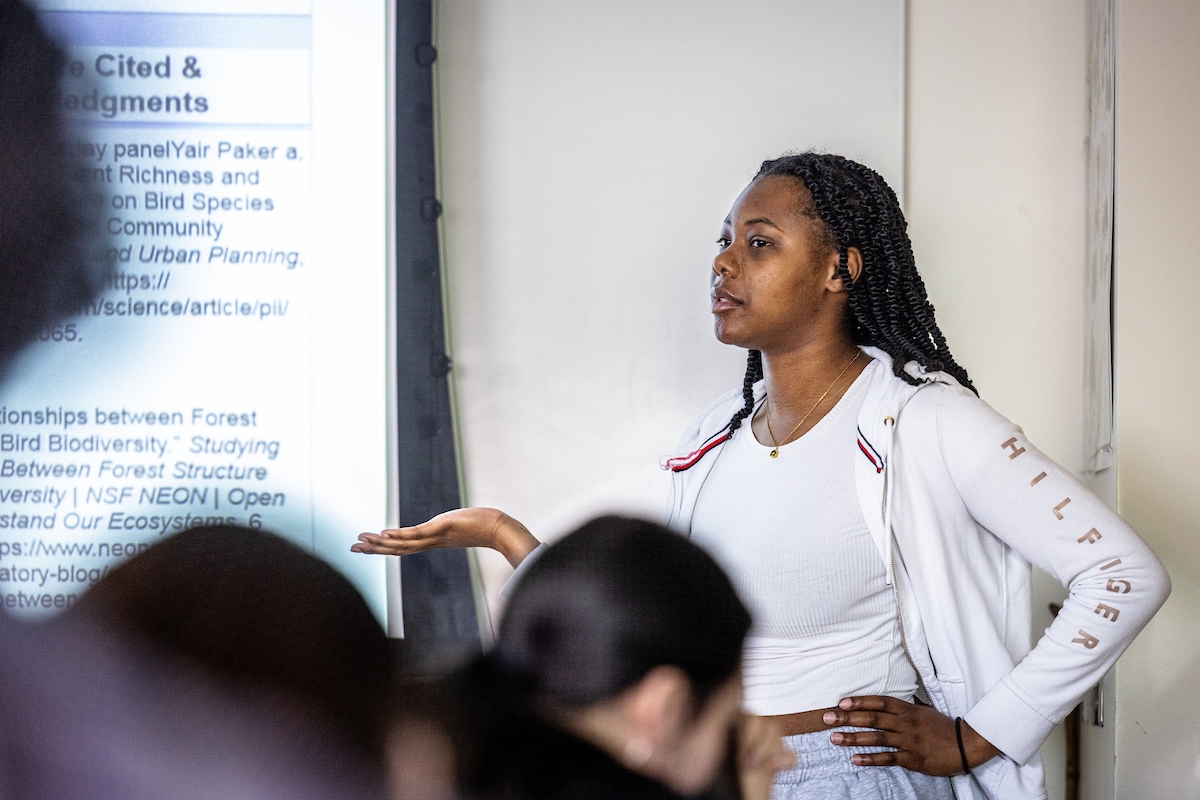As Cynthia Sagers suggested student-led projects in her Vegetation Dynamics class last semester, she mentioned the arboretum at Arizona State University’s Polytechnic campus.
That surprised graduate students Jonathan Ries and Maggie Huck. They didn’t know there was an arboretum on campus.
“It’s a pretty unknown feature, unfortunately,” said Huck, a second-year graduate student in applied biological sciences, a degree offered in the College of Integrative Sciences and Arts.
That’s because the arboretum isn’t really an arboretum. It’s a 50-foot botanical walk on the Polytechnic campus.
And the walk, which was installed more than 20 years ago, has fallen into some disrepair. Signs are either gone or the words have faded, making them unreadable. Plots have been abandoned. Where there’s supposed to be green, there’s bare ground.
It won’t be that way for long. The landscape is about to bloom, thanks to a grant proposal written by Ries and Huck, and a 10-year program that will involve, over that decade, about 1,300 students in Sager’s Biology 182 freshman class. The project will not only beautify the botanical walk but work toward ASU’s goals of sustainability and carbon neutrality.
“This one little project that these grad students dreamed up is going to have a pretty important impact,” said Sagers, a professor in the College of Integrative Arts and Sciences and vice president of the Faculty Women’s Association.
Huck and Ries, who is a first-year graduate student in applied biological sciences, already had done experiments on soil sampling in class. They decided to introduce concepts of plant biodiversity to see if that would increase the amount of carbon going into the soil.
They wrote a grant through ASU’s Sustainablility Initiatives Revolving Fund, which invests in projects that foster and enable sustainability efforts. Around the same time, Sagers was telling students in her Biology 182 class that their design or independent research projects could center on the walk and increasing its carbon sequestration.
“I think one of the main goals of this project was to engage early biology students specifically and get them involved in field work early in their biology careers,” Huck said. “We talked about that in our grad class. Most of us really hadn’t had that opportunity until later as undergrads. It was kind of a moment for me that clicked. We wanted as many students involved as possible.”
Thus, the description in their grant proposal:
"We aim to restore the Polytechnic Arboretum to its full potential and update outdated, fading signage. Inspired by a soil carbon content lab in Dr. Cynthia Sager’s Vegetation Dynamics class, we will also establish a long-term study that will engage early biology students in quantifying carbon sequestration in the newly improved space. Facilities staff, CISA faculty and students will collaborate to improve the biodiversity of the arboretum and to track changes in soil organic matter of experiential plots across 10 years."
Ries and Huck were awarded the maximum $5,000 for their grant, of which $2,900 will go for a muffle furnace that will allow for the processing of soil samples in the lab. Other funds will go for plant labels, new signage highlighting the presence of the walk and the soil-carbon sequestration study. Any remaining funds will be used to purchase native plants, but the majority of the more common plant species will be donated from the Boyce Thompson Arboretum, the Desert Botanical Garden and local nurseries.
Already, Sager’s students in Biology 182 have produced results that will help the botanical walk's growth. They found that carbon content is higher in high cover – an abundance of shade cast by plants — compared to low cover. Freshman Audranay Harvey’s project concluded that birds are more attracted to areas with high plant diversity.
Ries said he’s “blown away” by how Sager has taken their proposal and expanded on it to create a long-term project that not only will beautify the botanical walk but help future sustainable landscaping recommendations on all ASU campuses.
“The carbon sequestration is kind of at the core of this, but there’s also lots of overlap with things like ecology and bird diversity and stuff like that,” Ries said.
Deborah Thirkhill, grounds services program coordinator in ASU Facilities Development and Management, said she’s looking forward to the botanical walk being restored to its original luster.
“It’s exciting that people can enjoy that part of the campus,” she said. “It means so much to them to have lush, really well taken care of plants. And to learn a little about them.
“What’s the ecology of the plants? How do they interact in the desert? That’s really interesting. It’s a lot of fun. And to have the biology class involved? I think that’s really great.”
Top photo of the Polytechnic campus by Deanna Dent/Arizona State University.
More Science and technology

ASU professor honored with prestigious award for being a cybersecurity trailblazer
At first, he thought it was a drill.On Sept. 11, 2001, Gail-Joon Ahn sat in a conference room in Fort Meade, Maryland. The cybersecurity researcher was part of a group that had been invited…

Training stellar students to secure semiconductors
In the wetlands of King’s Bay, Georgia, the sail of a nuclear-powered Trident II Submarine laden with sophisticated computer equipment juts out of the marshy waters. In a medical center, a cardiac…

ASU startup Crystal Sonic wins Natcast pitch competition
Crystal Sonic, an Arizona State University startup, won first place and $25,000 at the 2024 Natcast Startup Pitch Competition at the National Semiconductor Technology Center Symposium, or NSTC…



